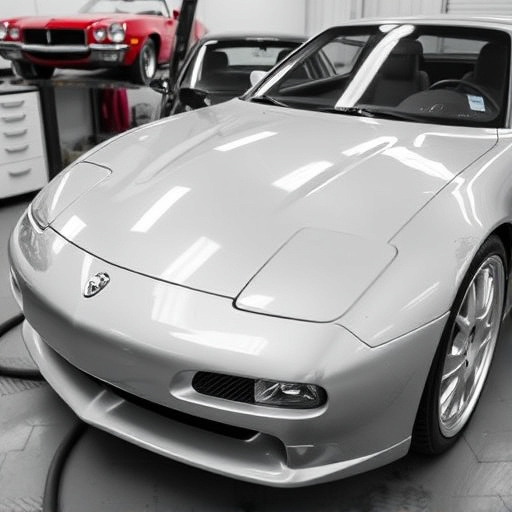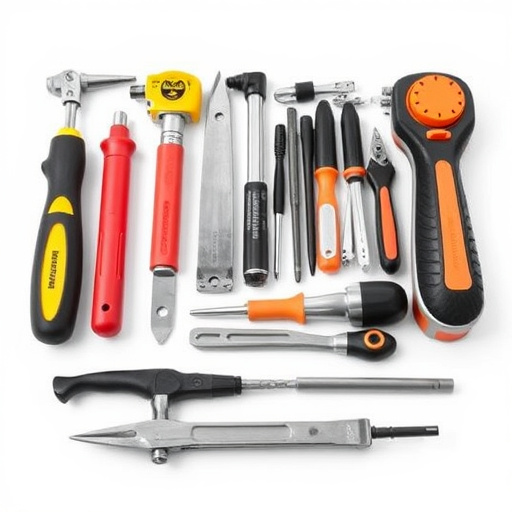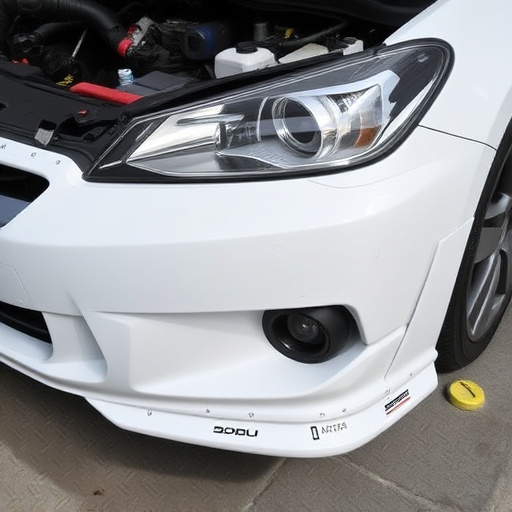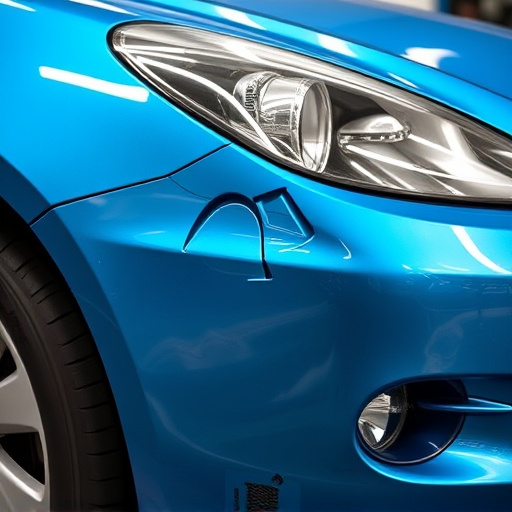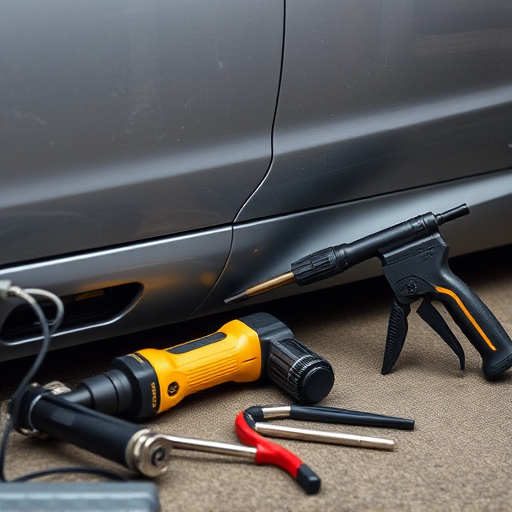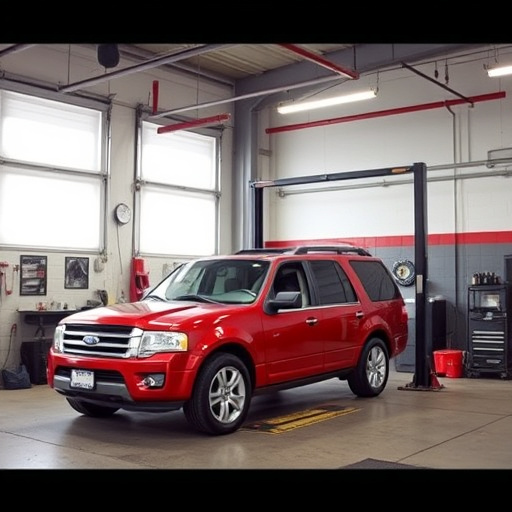Tesla heat pump inspection is a stringent process ensuring optimal performance and energy efficiency. It involves visual assessments, functional tests, and advanced calibration using tools like handheld calibrators and specialized software. Regular re-calibration at recommended intervals maintains precise readings, preventing costly repairs from damage or manufacturing defects. Trained technicians in automotive body shops perform these inspections for efficient operation within vehicle bodywork.
Tesla’s innovative Heat Pump technology is revolutionizing heating and cooling systems. This article delves into the essential process of inspecting and calibrating new Tesla Heat Pump components, ensuring optimal performance. We’ll explore the fundamentals of these advanced systems, providing a step-by-step guide to inspection for professionals. From understanding crucial components to mastering calibration techniques, this resource covers everything needed for efficient Tesla heat pump maintenance.
- Understanding Tesla Heat Pump Basics
- Inspection Process for New Components
- Calibration Techniques and Best Practices
Understanding Tesla Heat Pump Basics
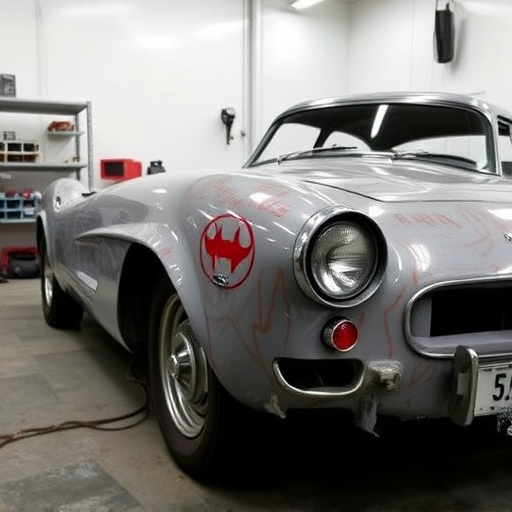
Tesla Heat Pumps, a cutting-edge technology in climate control, play a pivotal role in the company’s electric vehicles (EVs). Unlike traditional heating and cooling systems, these pumps utilize a heat exchange mechanism to transfer thermal energy between spaces, enabling efficient temperature regulation. At its core, a Tesla Heat Pump operates on a closed-loop system that circulates a refrigerant to absorb and release heat from various sources, such as the outdoor air or earth. This process makes them highly energy-efficient, significantly reducing power consumption compared to conventional heating methods.
Proper inspection and calibration are crucial for maintaining optimal performance in new Tesla components. Regular check-ups ensure that the heat pump operates within manufacturer specifications, enhancing both energy efficiency and vehicle comfort. During an inspection, professionals examine critical elements like refrigerant levels, compressor health, and evaporator/condenser coils’ functionality. Given the sensitive nature of these systems, any issues detected early can prevent more serious problems, potentially saving costs in auto maintenance or even mitigating the need for extensive repairs, such as those required after automotive collision repair or hail damage repair.
Inspection Process for New Components

The inspection process for new Tesla heat pump components is a meticulous procedure designed to ensure optimal performance and energy efficiency from the outset. It involves a comprehensive evaluation of each unit, focusing on both functionality and precision. Technicians start by visually inspecting the heat pump for any signs of damage or manufacturing defects. This initial check includes examining the exterior for proper labeling, ensuring all connectors are secure, and verifying that the component aligns with Tesla’s specifications.
Subsequent to the visual inspection, a series of functional tests are conducted. These tests mimic real-world scenarios, assessing the heat pump’s ability to regulate temperature, maintain pressure levels, and adapt to changing environmental conditions. Advanced diagnostic tools are employed to calibrate the component, ensuring it operates within precise parameters. This meticulous process mirrors Tesla’s commitment to quality control, mirroring the same rigor applied to renowned car body repair and vehicle repair practices, thereby guaranteeing a robust and reliable heating solution for electric vehicles.
Calibration Techniques and Best Practices
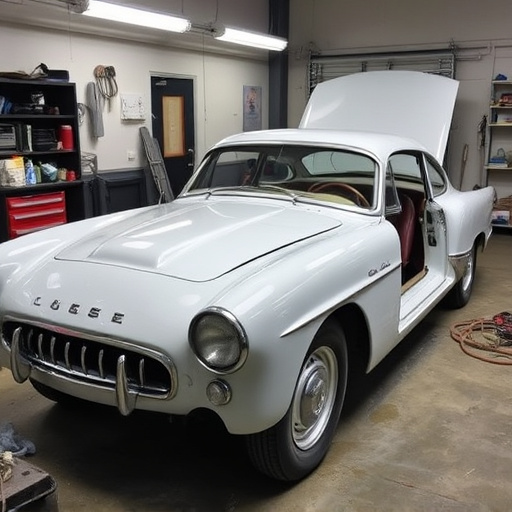
Calibration is a critical step in ensuring optimal performance of Tesla heat pumps, and it involves precise techniques to achieve accurate readings. The process begins with identifying the specific components that require calibration, which can include temperature sensors, pressure regulators, and flow meters. Advanced tools such as handheld calibrators and specialized software are utilized to set the instruments to their exacting specifications, ensuring they match the manufacturer’s standards.
Best practices in calibration emphasize accuracy, repeatability, and consistency. Maintaining a clean and controlled environment during the process is vital to prevent contamination or interference from debris or moisture. Regular intervals for re-calibration, as recommended by the manufacturer, are essential to account for any drift in readings over time. An automotive body shop or auto body repair facility with trained technicians can perform these calibrations, ensuring that Tesla heat pumps function at peak efficiency within their vehicle bodywork.
Tesla heat pump inspection and calibration are essential steps in ensuring optimal performance and energy efficiency. By understanding the basics of these systems and employing proper inspection processes, technicians can identify potential issues early on. Calibration techniques, when followed rigorously, guarantee precise adjustments, maximizing the benefits of Tesla’s innovative heat pump technology. Regular maintenance through these practices will contribute to a well-functioning heating and cooling system for years to come.
